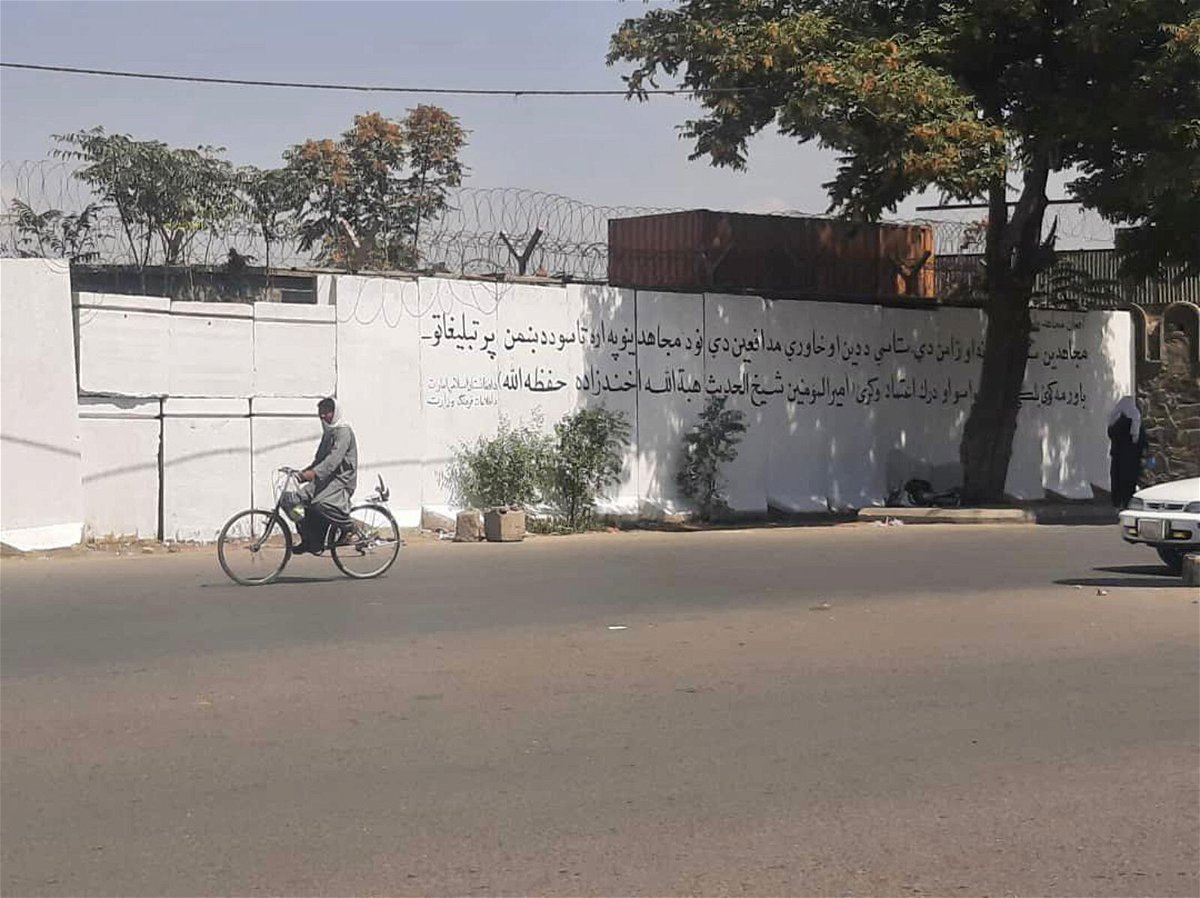Afghan artists destroy their work fearing Taliban retribution

Taliban paint over mural in Kabul and replace it with text that reads "don't trust the propaganda of the enemy".
Celine Alkhaldi, CNN
Residents of Kabul can read the writing on the wall. “Don’t trust the propaganda of the enemy” says one freshly painted sign.
The message replaced a mural of US envoy Zalmay Khalilzad and Taliban leader Mullah Abdul Ghani Baradar shaking hands, marking the signing of the 2020 agreement to withdraw American troops from Afghanistan — one of dozens of vibrant public artworks that have been erased since the Taliban took power in August.
While some of the murals were overt in their demands for equal rights for women and an end to corruption, other pieces were meant to provoke thought, inspire hope, and spread joy to passersby. Today, they’re obscured by thick layers of paint, as well as Taliban slogans and flags.
The move has been received as a warning shot to the country’s arts and culture scene. “The biggest fear for me, and most of the artists I work with… is not being able to express ourselves, to criticize the power,” said curator Omaid Sharifi over WhatsApp. He is the co-founder of ArtLords, a grassroots arts initiative that has transformed protective blast walls into sites of creative expression for nearly a decade.
“The fear is that this society will become just black and white… (and) that we will not have the beautiful diversity and beautiful colors in this country anymore.”
This is not the first time the Taliban has taken a stand against the arts in Afghanistan. When the Taliban was last in power, from 1996 to 2001, the regime defaced public paintings and destroyed cultural heritage sites around the country. In 1996, members machine-gunned an iconic fountain in the city of Herat, in western Afghanistan; while in 2001, they blew up two colossal statues of the Buddha that had looked over the Bamiyan Valley for 1500 years. Most forms of music were banned, and television was declared un-Islamic.
The hardline group insists their rule will be different this time around. But many artists are skeptical.
Watching the Taliban destroy nearly 100 of the murals he and the ArtLords team produced, Sharifi does not see room for artists to thrive under a Taliban regime. He, along with many of his colleagues, have either fled Kabul or are living in hiding.
Some artists, he added, have made the difficult decision to destroy their own work out of fear of retribution. “The feeling of destroying a piece of art is not very far from losing a child… because it is your own creation. It is something you have memories with… something you’ve dreamt about,” he explained. “Suddenly you are putting fire to it — to all your dreams your aspirations to all your hopes.
“No one should go through this. And we don’t deserve, as artists in Afghanistan, to go through this.”
One artist and gallery owner, who asked to remain anonymous, said that having to destroy his own work is a “wound that will not be healed.” He is also concerned for his livelihood, telling CNN that shutting down the gallery has threatened his income.
“I thought that through my art I might be able to solve my family’s financial problems,” he said. “We spent our youth serving, hoping we may have a better tomorrow, but [it’s] such a pity what type of people decide our future in this country.”
One female artist, who also shared her story on the condition of anonymity, felt the stakes were higher because of her gender. She told CNN that ever since the center where she took art classes was shut down, she no longer has a space to practice her art. She explains it is easier for her male classmates to resume their art than it is for women like herself.
“The boys, they can go to a teacher’s home, and they can continue their work from there. They can gather informally…But for girls, it’s not possible to do that,” she said. For women, she added, meeting at a place that is not a formal center for learning is uncommon. “We are so fearful of what might happen, that we don’t even want to try it”.
She also feels repressed due to her subject matter. Specializing in female portraits, she fears that if her work is viewed by the Taliban, she will face retribution. “Women’s faces are not meant to be uncovered. It is wrong according to the Taliban.”
She wants to continue her practice but says the studio that was once a safe space for her creative expression is now a stationery store. She hopes her drawings can be viewed by the world, but for now she must find a way to continue to make art in Afghanistan.
The-CNN-Wire
™ & © 2021 Cable News Network, Inc., a WarnerMedia Company. All rights reserved.
